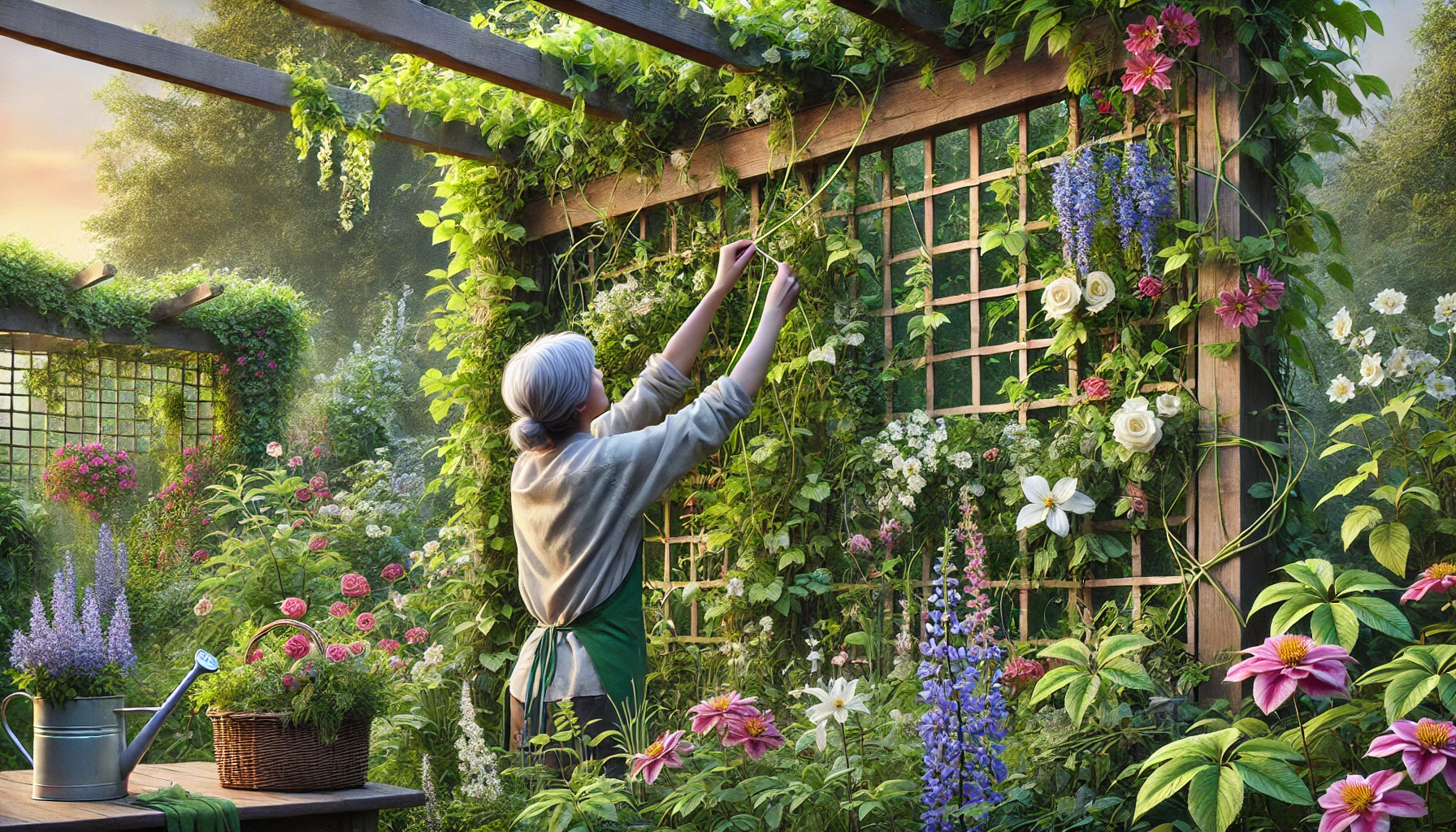Climbing plants are perfect for adding vertical greenery, creating privacy, and beautifying fences, walls, and trellises. With the right support and care, these plants can thrive and transform any space. This guide will show you how to grow and maintain healthy climbing plants.
1. Choosing the Right Climbing Plants
Different climbers have varying growth habits. Select the best type for your space and needs.
Flowering Climbers
- Clematis – Produces vibrant flowers in various colors.
- Jasmine – Fragrant blooms that attract pollinators.
- Honeysuckle – Hardy and attracts hummingbirds.
Evergreen Climbers
- Ivy (Hedera helix) – Ideal for covering walls and fences.
- Star Jasmine – Maintains green foliage year-round.
Fruit and Vegetable Climbers
- Tomatoes – Grow well on stakes or cages.
- Cucumbers – Benefit from vertical growth for better airflow.
- Passionfruit – A vigorous vine that produces edible fruit.
2. Providing the Right Support
Choose the correct support system based on plant type:
- Trellises – Best for lightweight climbers like peas and jasmine.
- Arches and Pergolas – Ideal for flowering vines and roses.
- Fences and Walls – Great for ivy and climbing hydrangeas.
- Wire or Netting – Helps tendrils like cucumbers and peas grip and grow upward.
3. Planting Climbing Plants
- Select a sunny spot for most flowering climbers.
- Ensure well-draining soil with compost for nutrients.
- Position plants 12-18 inches away from walls or fences to allow proper root growth.
4. Watering and Feeding
- Water deeply but infrequently to promote strong roots.
- Use organic compost or fertilizer every few weeks during the growing season.
- Mulch around the base to retain moisture and prevent weeds.
5. Pruning and Maintenance
- Prune regularly to control growth and encourage flowering.
- Tie stems loosely to supports as they grow.
- Remove dead or damaged vines to maintain plant health.
6. Common Issues and Solutions
- Leggy growth? → Provide more sunlight and prune excess growth.
- No flowers? → Add phosphorus-rich fertilizer and avoid excessive nitrogen.
- Weak climbing? → Guide tendrils manually and use soft ties for support.
7. Enjoy a Lush Vertical Garden
With the right care, climbing plants add height, beauty, and functionality to any space. Whether covering a fence, decorating a pergola, or growing edible vines, these plants enhance any garden with minimal effort.

